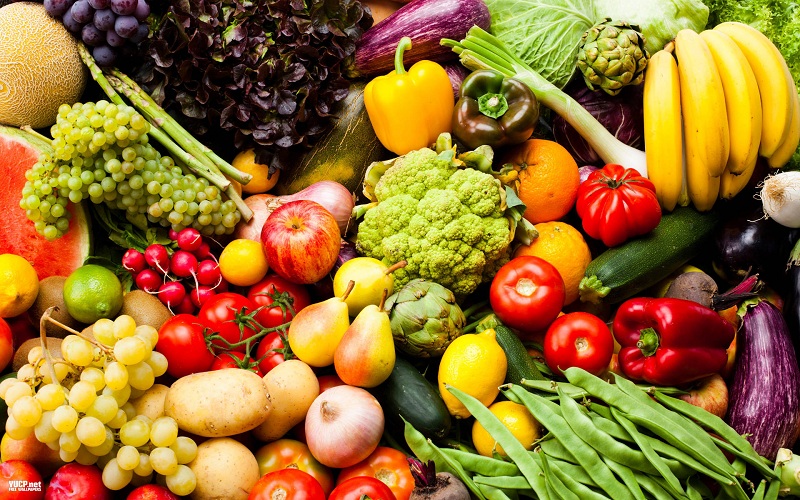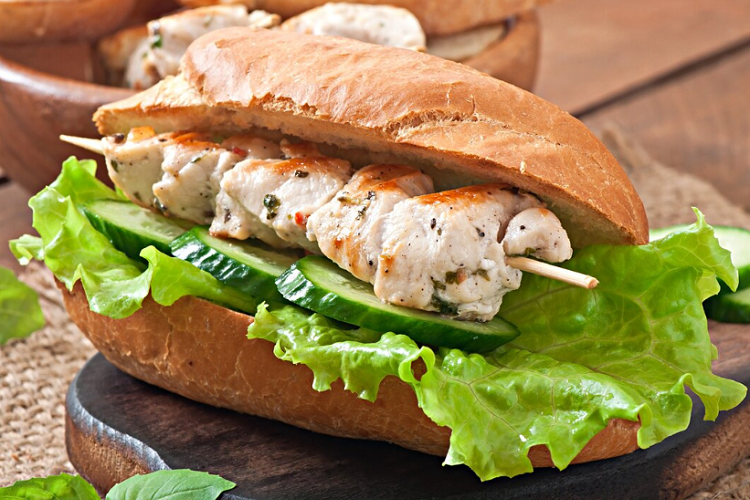Experts recommend you consume at least two and a half cups of vegetables and two cups of fruit each day. Do you ever struggle to meet your daily quota? You probably know that an abundant dose of produce leads to optimal health by providing the necessary vitamins, minerals, fiber, antioxidants, and phytonutrients. Yet, 75 percent of the population neglect to actually achieve the bare minimum. Here are some tips and tricks to help you boost your intake.
Let Thy Leafy Greens Be Thy Medicine
Without question, leafy green veggies offer the most nutrients per calorie and are extremely versatile. You should aim to eat a pound of raw and a pound of cooked leafy greens every day. Here are some sneaky ways to fulfill that suggestion:
- Make a green smoothie. Mix any variety of greens (especially mild-flavored kale, spinach, dandelion greens, and collards) to equal portions of frozen fruit and some coconut water or plant milk for a nutrient-dense breakfast.
- Chop up any greens into tiny pieces and add them to your boiling whole grain pasta 30 to 45 seconds before it is done the cooking. Drain, add your favorite oil-free sauce and enjoy.
- Make your own bean dips such as hummus, and blend in fresh herbs like Italian parsley, cilantro, basil, or dill for flavor and nutrition.
- Eat a huge salad every day. Combine an assortment of greens with your favorite colorful veggies, beans, blanched vegetables, cooked potatoes, corn, dried or fresh fruits, baked squash, seeds, and nuts.
- Use a large collard green leaf or nori (seaweed) sheet to make a raw sushi roll or wrap.
Fresh and Fabulous Fruits
Fruits are the most portable and satisfying snacks—not to mention they contain mass amounts of much-needed micronutrients.
- Start your day with one or more pieces of seasonal fruit or combination of fruits (a la fruit salad) as soon as you feel hungry.
- Pack apples, pears, bananas, oranges, tangerines, peaches, nectarines, and other one-piece wonders with you wherever you go. Or bring baggies filled with fresh berries, grapes, or chopped fruits.
- Freeze grapes for a yummy, quick snack or dessert.
- Make “ice cream” by blending together a combination of frozen fruits with just enough coconut water or plant milk to allow the blender to move. Add a splash of alcohol-free vanilla, almond, or other flavored extracts for some extra pizzazz.
Carotenoid-Rich Veggies
Enjoy the plethora of reds, oranges, and yellows that come from the plant kingdom to up your intake of carotenoids. These pro-vitamin A compounds are found in leafy greens, too. They offer protection for your eyes, immune system, and prostate and act as antioxidants. Carotenoids are safe and most effective when they come directly from the food source, and their benefits are enhanced by cooking.
- Make delicious soups with pumpkins, sweet potatoes, yams, squash, carrots, and peppers.
- Bake sweet potatoes and yams and keep them in the fridge for a ready-to-eat snack.
- Use pureéd pumpkin, sweet potato, or carrots in replacement of oil in baked goods or blend them with marinara sauce for use in pasta, pizza, or lasagna.
- Make a bean dip or guacamole and eat with sliced carrots and red, orange, and yellow peppers.
- Bake thinly-sliced sweet potatoes at 400 degrees Fahrenheit until brown for healthy chips.
Cancer-Fighting Cruciferous Vegetables
Super-skilled compounds called isothiocyanates (especially sulforaphane) should be eaten consistently for maximum protection against cancer. Cabbage, broccoli, cauliflower, and Brussels sprouts are some of the most potent cancer-fighting foods you can eat—and they are absolutely delectable when prepared properly. Here are a few ways to get more of them into your diet:
- Roast plain Brussels sprouts, cauliflower and/or broccoli florets on a silicone-lined baking sheet at 375 degrees Fahrenheit until soft and browned. Sprinkle with nutritional yeast and enjoy.
- Chop broccoli into tiny pieces and add to salads, soups, whole grains, guacamole, lasagna, pasta, or casseroles.
- Shred red and green cabbage with shredded carrots and add an oil-free dressing (like a mixture of citrus juice, zest, and fresh ginger) for a refreshing slaw.
- Smash cooked cauliflower into your favorite mashed potato recipe.
- Use a cabbage leaf as a wrap to hold sandwich fillings, salsas, dips, and spreads.
- Stir-fry bok choy, shredded cabbage, and broccoli with snow peas, carrots, and mushrooms in vegetable broth, tamari, rice vinegar, red pepper flakes, ginger, garlic, and a touch of brown rice or date syrup. Try it served over brown rice, whole grain pasta, or green salad.
Up the Ante with the Allium Family
Allium vegetables are fragrant, bulbous plants like onions, scallions, leeks, and garlic. Besides lending a pungent flavor boost to many dishes, they also have powerful health benefits including antioxidant, anti-inflammatory, and anti-clotting effects. Because of their ample polyphenol content, members of the allium family can decrease blood cholesterol and triglycerides, and reduce cancer risk. These are easy to get into your diet:
- Roast garlic bulbs (with the top sliced off, exposing the cloves) at 400 degrees Fahrenheit for 40 to 60 minutes, or until soft. Spread on whole grain crackers or add to hummus or any other dish calling for garlic.
- Use sliced leeks sautéed in vegetable broth as a base for soups or other dishes.
- Top off soups, dips, salsas, sandwiches, and spreads with sliced scallions.
- Throw in finely chopped onions to guacamole, salsa, and any type of salad.
Think fruits and vegetables at every eating opportunity. There is always a way to enhance consumption of nutrient-dense, disease-fighting produce. Use your creativity, explore new ideas, and—most importantly—let your taste buds do the talking.




